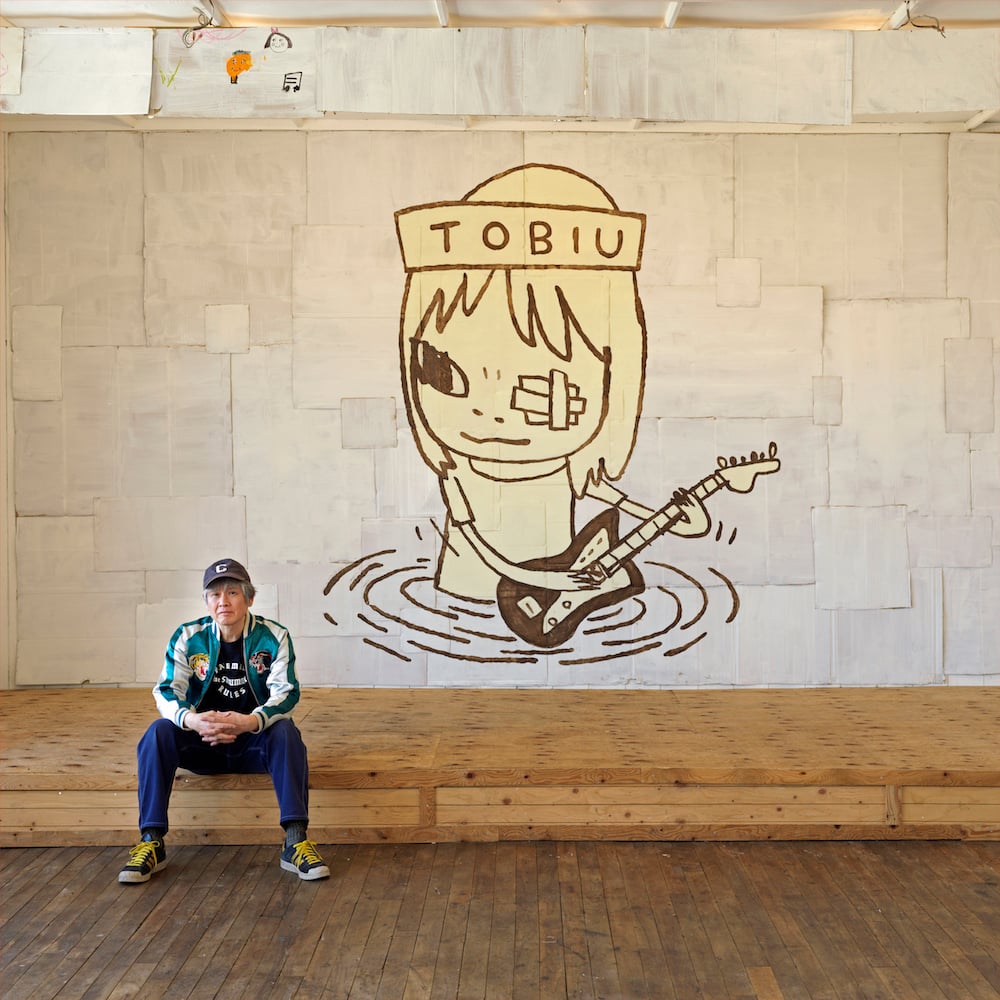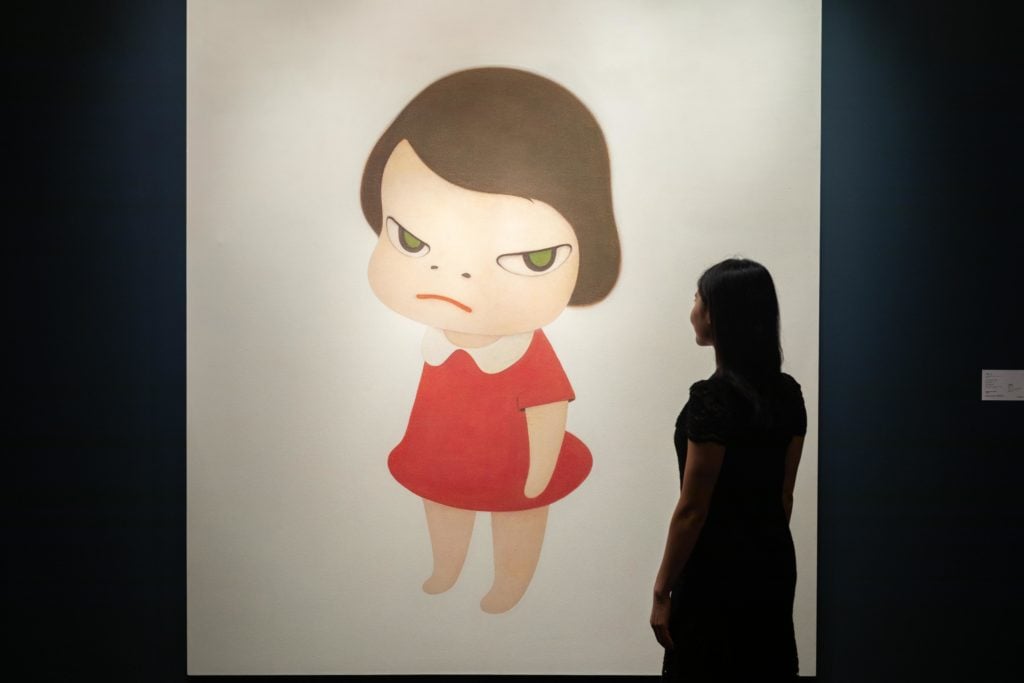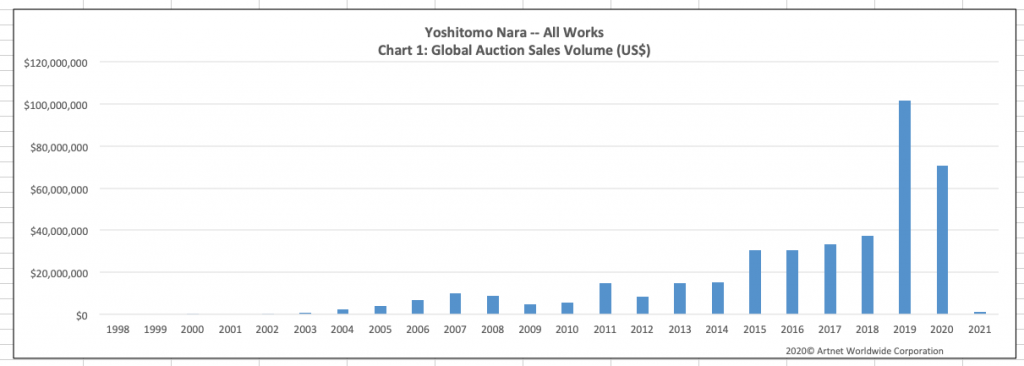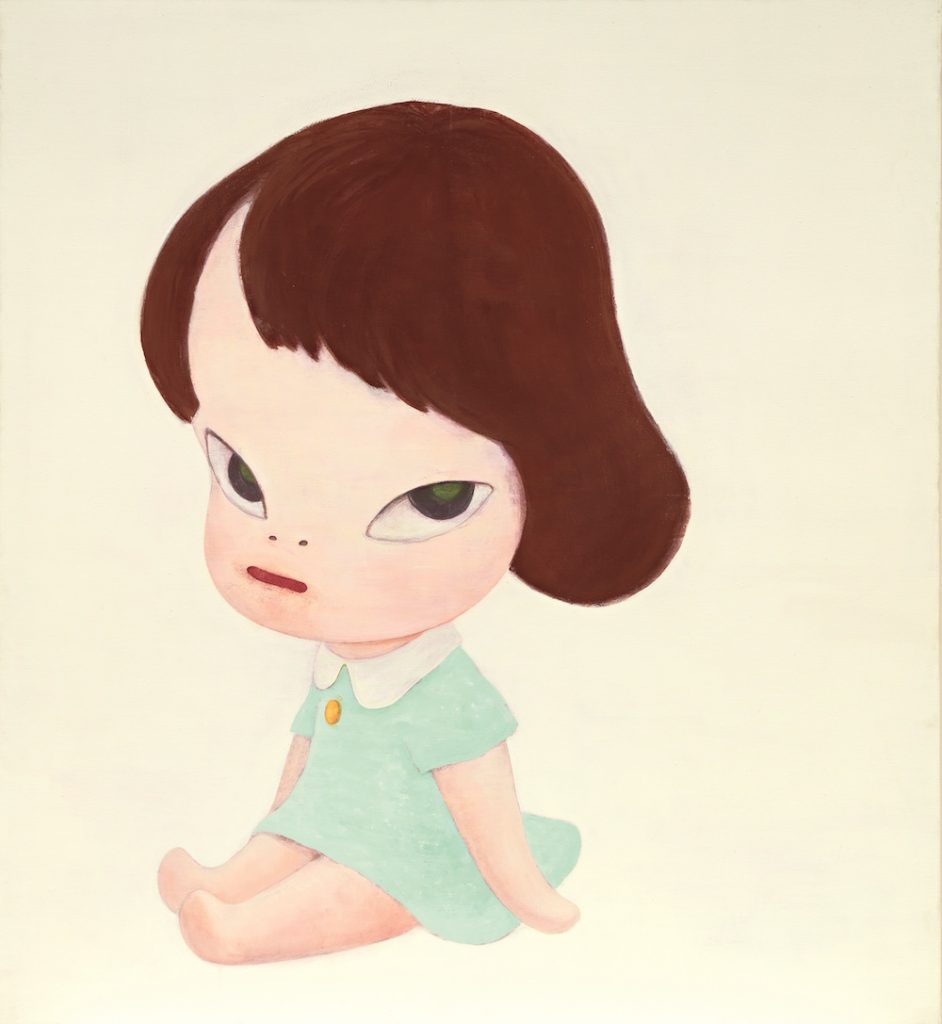Market
How Artist Yoshitomo Nara’s Return to Japan After 12 Years Abroad Reshaped His Style—and Supercharged His Soaring Market
The artist's famously sassy cartoon characters command millions of dollars.

The artist's famously sassy cartoon characters command millions of dollars.

Eileen Kinsella

A small girl in a red dress with one hand hidden behind her back glowers defiantly. Is she a harmless child in the throes of a tantrum, or something more sinister? The simple but cheeky title—Knife Behind Back—yields a sobering clue.
The painting, created in 2000 by the Japanese sensation Yoshitomo Nara, soared to a final price of $24.9 million when it was offered at Sotheby’s Hong Kong in October 2019, roughly five times the artist’s previous auction record of around $5 million at the time.

Yoshitomo Nara Knife Behind Back (2000). Courtesy Sotheby’s Hong Kong.
For the past three decades, Nara’s signature characters—cartoonish, endearing little girls with big heads and giant eyes, sometimes with angry expressions, other times looking angelic or contemplative—have found audiences around the world, and been eagerly snapped up by collectors.
But in recent years, there has been a noticeable uptick in his market, fueled in part by a generation of young, savvy collectors, and evidenced by the fact that the 13 highest auction prices to date for his works were achieved only in 2019 and 2020.
The Artnet Price Database lists a hefty 3,600-plus lots by Nara that have come to auction. The prices range from under $100 (for pencil drawings on paper and doll-like figurines) to mid- and high six-figures (for paintings), all the way up to the recent $25 million record. To date, 79 works have sold for over $1 million each at auction.

Yoshitomo Nara’s global auction sales through 2021. © Artnet.
What is it about these impish characters that strikes such a resonant chord with viewers and international connoisseurs alike?
The explanations run surprisingly deep, and are inextricably linked with the artist himself—a fascinating character who grew up in Japan as a latchkey kid not far from an American air base, which had a hand in influencing his interests in American culture and music.
Nara moved to Germany to study at Kunstakademie Dusseldorf and remained in the country for 12 years before returning to Japan in 2000. Despite what those close to him say is his abhorrence of his high-flying market and art-world norms, Nara’s mythic status and devoted fan base has only ever increased over the years.
And though he has been extraordinarily prolific for such a long time, he has no assistants and works by himself in a studio he built, something of an anomaly for a working contemporary art star.
“His aesthetic might appear deceptively simple on the surface but draws powerful emotional appeal,” said Yuki Terase, Sotheby’s head of contemporary art in Asia. “His concise yet highly emotive language is reminiscent of Pop, punk rock, animation, cartoon, and manga, while also harkening back to traditional Japanese woodcut forms as well as Renaissance paintings. This unique concoction results in an extraordinary effect.”
(Audiences interested in testing that claim will have to wait: a much anticipated Nara retrospective curated by Mika Yoshitake—his largest US show to date—has been installed at LACMA, but the museum remains closed to the public.)
Meanwhile, Dallas Contemporary in Texas is opening a Nara show next month, “I Forgot Their Names and Often Can’t Remember Their Faces but Remember Their Voices Well.” Curator Pedro Alonzo, who helped organize one of the first US shows of Nara back in 1997 when he was at Inova, in Milwaukee, told Artnet News it will be less formal than other shows. For instance, many of the works are rendered on cardboard or wood, he says, “and have an unfinished quality.”
Los Angeles dealer Tim Blum, who has worked with Nara for more than 25 years, was living in Tokyo and running a small kunsthalle in the 1990s when he first encountered Nara’s work. He recalls having a “visceral, physical emotional reaction.”
“It’s a non-verbal place he taps into,” Blum says. “This guy is like the great leveler.”
Since Nara’s first Los Angeles gallery show in the mid 1990s, interest has steadily grow. Yet there was an undeniable tipping point that occurred when Nara returned to Japan in 2000.
Knife Behind Back is from that time period. Terase describes it as “a watershed moment in the artist’s life,” labelling it “extremely special in terms of execution, motif, and theme.”
“The early works are more cartoonish with heavy lines and simple colors,” says Phillips specialist Kevie Yang. “In the 2000s, they became more colorful and there is more of a dreamy quality, with starry eyes.”

Yoshitomo Nara, Hothouse Doll (1995). Image courtesy Phillips and Poly Auction, Hong Kong.
Yang says that along with the change in style came a generational shift, with new buyers tuning in.
“Nara is on their list. There are buyers who are relatively young, in their 20s and 30s, buying masterpiece works. They’re not shy to spend a huge amount of money on A-class works and it’s really pushed the market very high over the last two years.”
Phillips sold the second-most expensive Nara work at auction this past December, when Hothouse Doll (1995) took in $13.3 million at a sale held in conjunction with Poly auction house in Hong Kong. Eight international bidders bid on the work, according to Yang.
In 2011, after the Fukushima nuclear disaster, Nara made another stylistic shift when he began making sculptures of children’s heads with rough textures and solemn contemplative. The works, which he made in clay by hand, contrasted with the sculptures he made in the mid to late 1990s, which have near-glass-like surfaces.
“So much came after that in terms of Nara’s personal relationship to that disaster, and the way in which it affected his thinking and the direction of his art,” says Joe Baptista, a director at Pace who works closely with the artist.
Aisi Wang, a specialist in Christie’s, says the post-2011 works tend to draw Western collectors, while Asian audiences gravitate more to pre-2011 works that are influenced by the ukiyo-e period. (The current auction record for a sculpture is $2.1 million for Your Puppy, a smooth, glass-like work that sold at Ravenel auctions in Taipei this past July.)
Not that Nara doesn’t have his critics. But Wang, the Christie’s specialist, says the inside joke is that only two kinds of people don’t like Nara’s work: those who don’t take it seriously, and those who haven’t seen it in person.